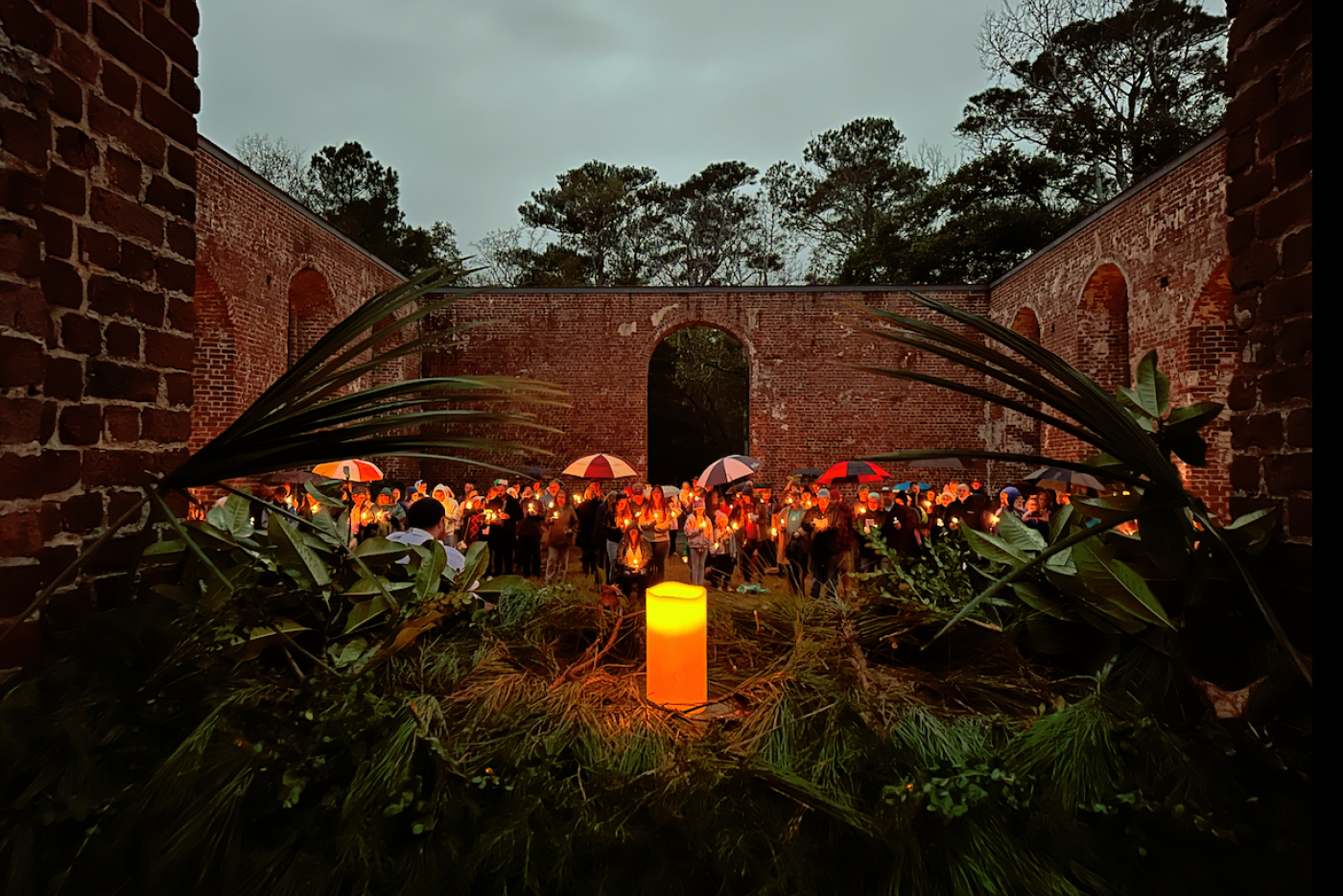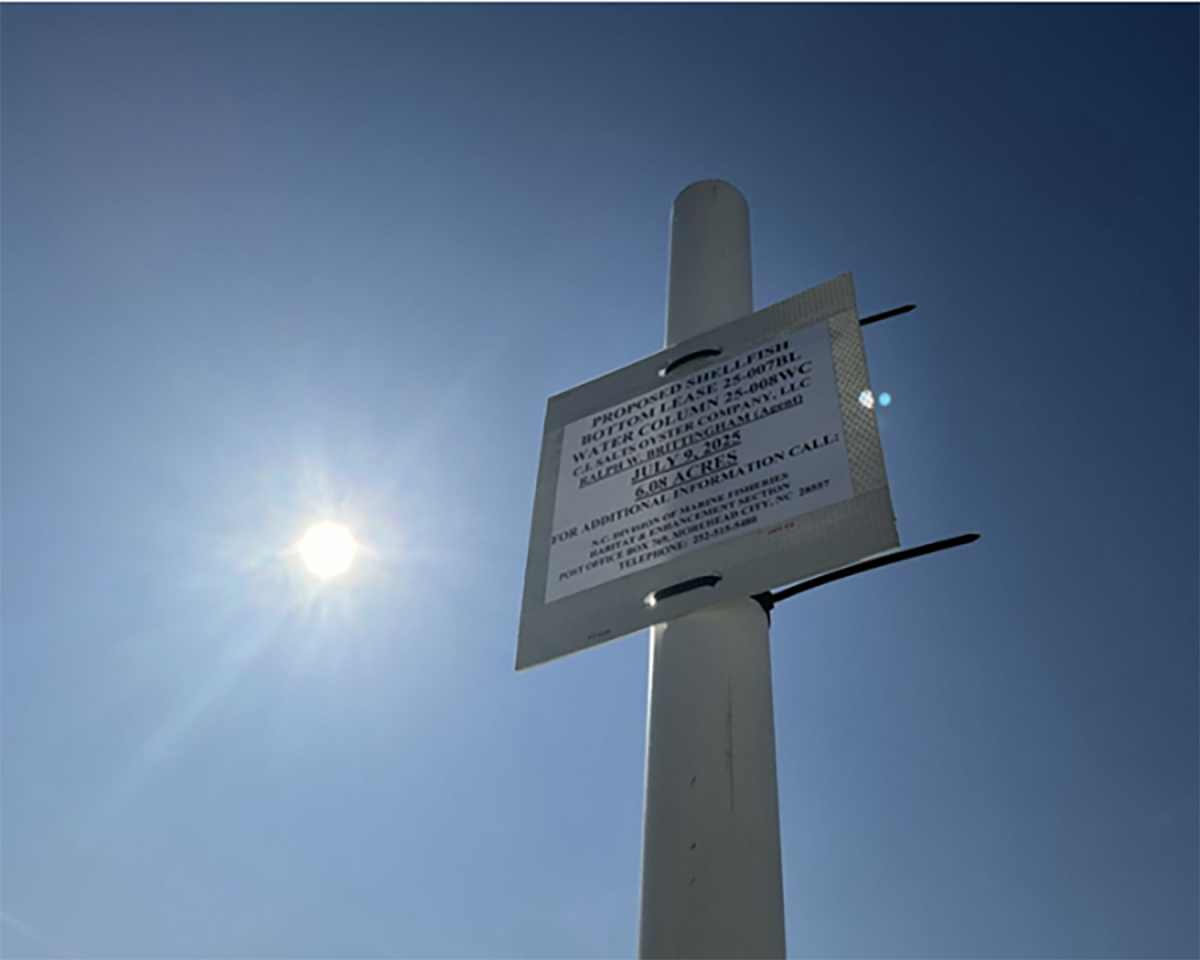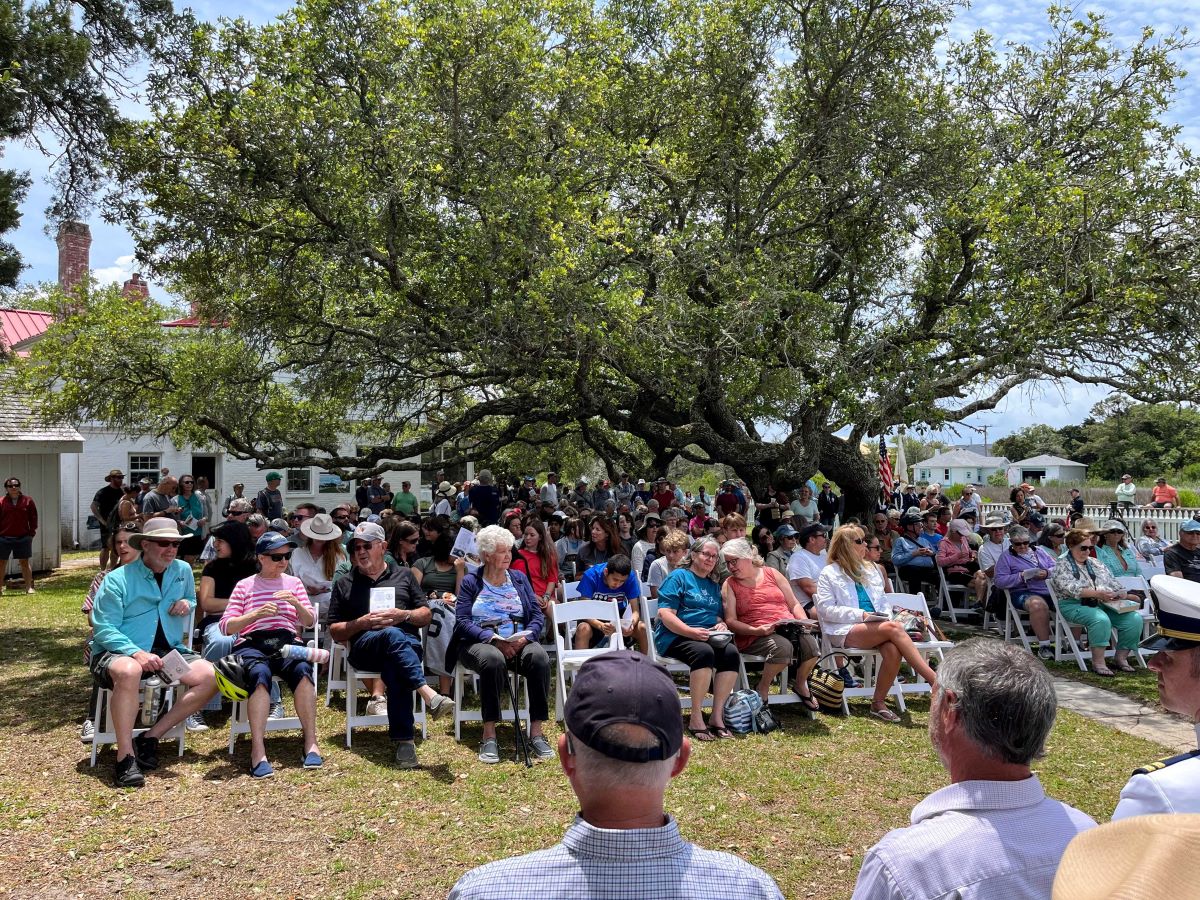
Reprinted from Ocracoke Observer
Lighthouses are things that aren’t built anymore yet they are snapshots in time, David Hallac, superintendent, National Parks of Eastern North Carolina, said Thursday during the 200th birthday celebration of the Ocracoke Light Station.
Supporter Spotlight
“Their importance goes well beyond this picturesque scene here, where we sit in the shadow of the protection of a navigational icon and beautiful landscape,” he said.
The National Park Service owns the light station, and more than 500 visitors, islanders and dignitaries attended the celebration on the grounds of this iconic emblem of Ocracoke.
“This location is special as it’s embedded in the village and is part of the community,” Hallac said under a sunny sky with the crowd, seated and standing under decades-old live oak trees, buffeted by a breeze.
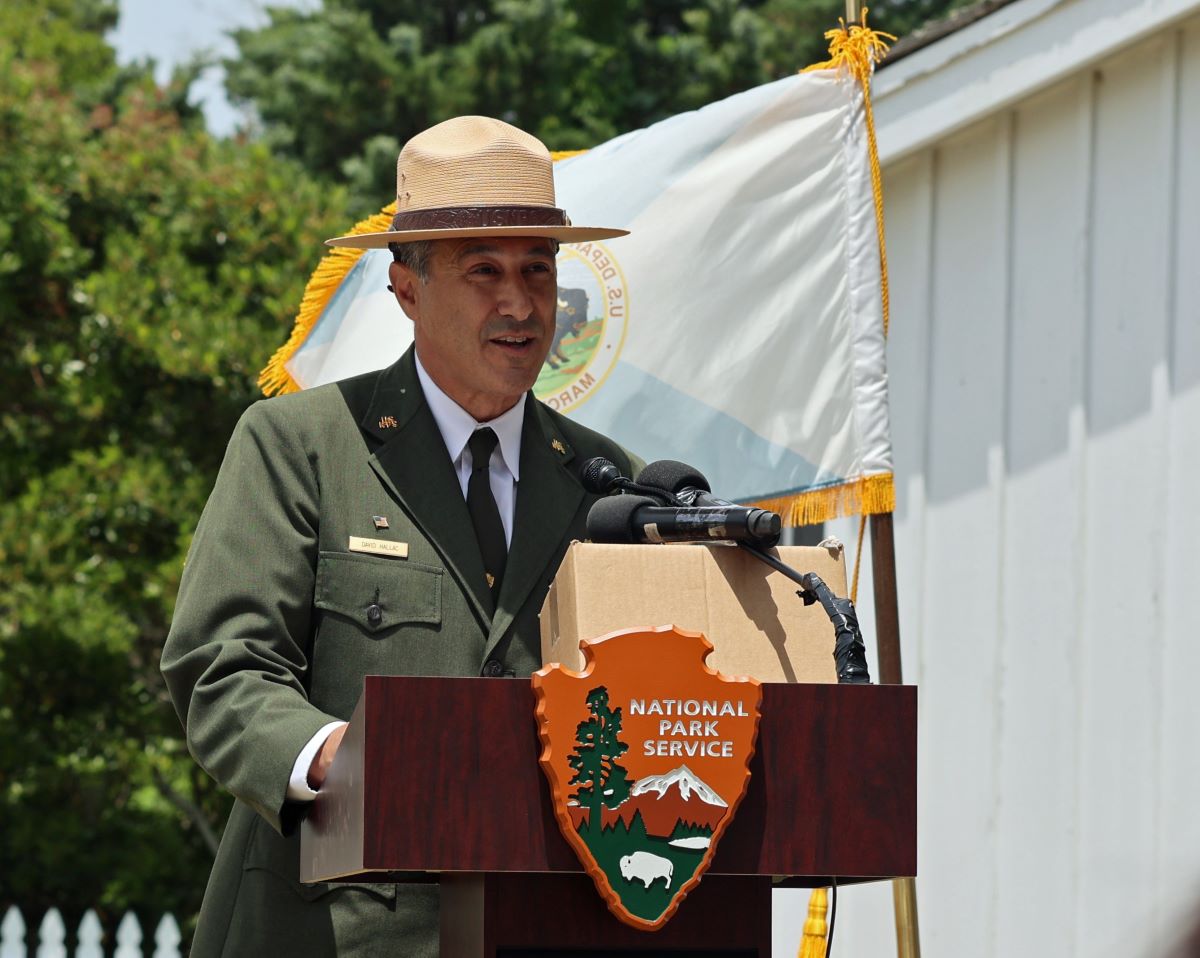
Hallac was among several who spoke about the lighthouse history and shared stories.
Alton Ballance, author of “Ocracokers” and whose family on Ocracoke stretches back to the 1700s, served as the master of ceremonies. He began with a pop quiz. Does anyone know who the president was when the lighthouse was built? After a bit of an awkward silence and some titters, he pronounced “James Monroe.” The audience was then off the hook for the rest of the ceremony.
Supporter Spotlight
While the National Park Service opens the base of the lighthouse in the afternoons, no one is allowed to climb up the spiral stairs.
But John Simpson, great-grandson of the second-to-last keeper, Joseph M. Burrus (1929 to 1946), recounted how he used to climb to the top to hang a Christmas wreath on it.
“It’s a great view,” he said. “One you won’t find anywhere else.”
Simpson wasn’t the only one. Philip Howard, who has been collecting stories and history on Ocracoke for most of his life, related a heretofore unknown tale of climbing to the top one night with a few friends.
“The first time I climbed up it was 1952 and I was 8 years old,” Howard said. “The next time I climbed it was in 1982 and it was illegal,” noting that he had researched the statute of limitations for criminal trespass on federal property which had long passed, drawing much laughter.
“It was midnight, a beautiful night with a waning moon and the light from the lighthouse were joined together to cast eerie shadows across the lawn,” he said.
Included in the group was a park ranger who had obtained a brass skeleton key that goes to the door of the lighthouse. Swearing to secrecy, he and his three friends crept silently along the wooden walkway so as not to awaken the keeper and his family.
The group climbed up the spiral staircase.
“But it doesn’t go to the top,” Howard said. “There’s a ladder that goes up to the lantern room through a trap door.”
When one of them opened the trap door, they all heard a loud ‘Hoot, hoot, hoot!’” Howard said, flapping his arms and loudly hooting. “It was a barred owl guarding her nest,” he explained as the crowd laughed. The young man shut the door and the men scurried down and ran off.
They did not know that a windowpane had fallen out and an owl set up a nest next to the Fresnel lens.
As for the rest of the story, a few days later, the ranger casually noted to the keeper that he just noted a broken window. Howard reassured everyone that the owl was permitted to raise her hatchlings and the window was repaired after they had safely fledged.
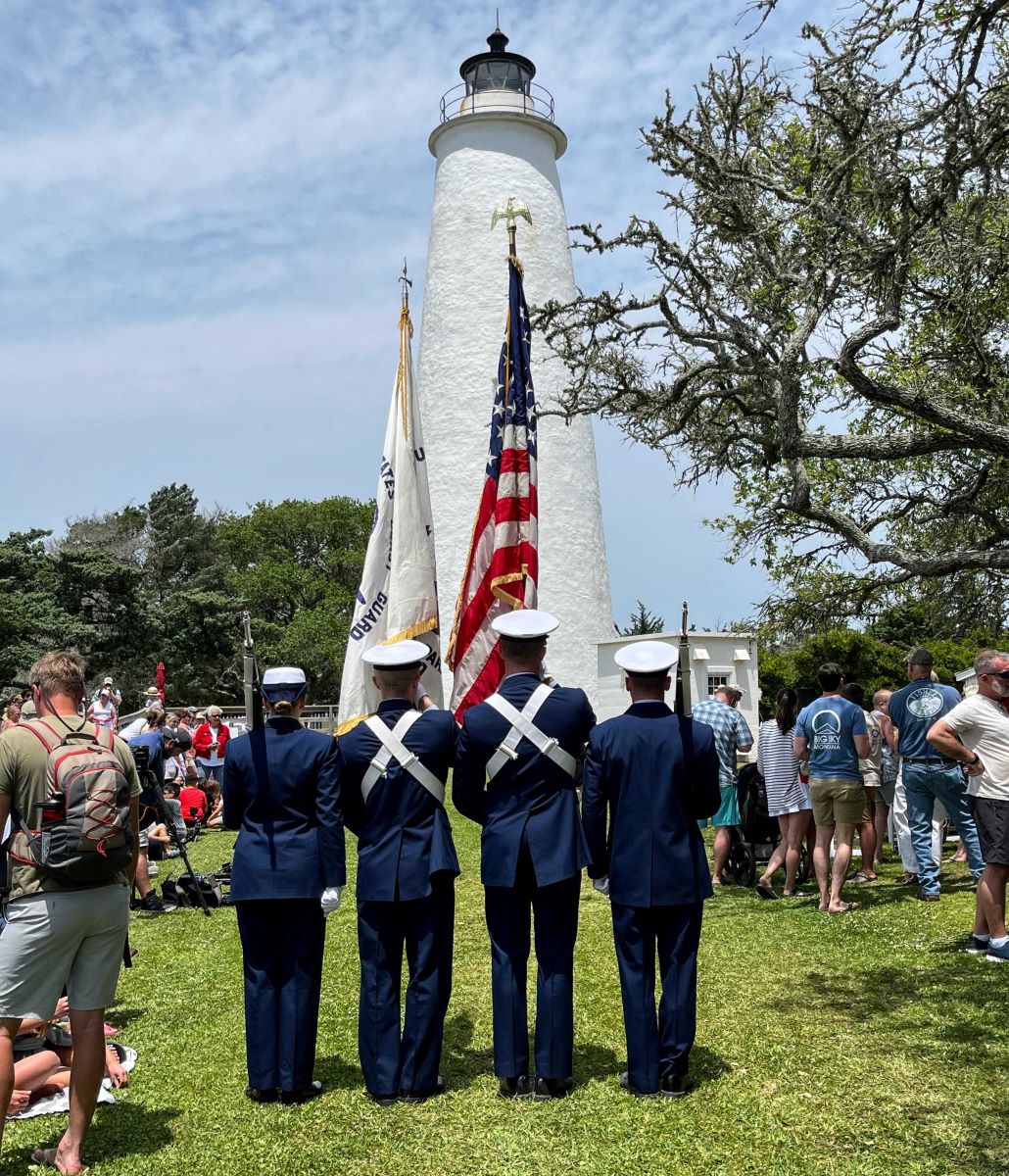
Jami Lanier, deputy chief of cultural resources with the Cape Hatteras National Seashore, gave a narrative of the buildings.
She noted that the Ocracoke light is a secondary light because it is located more inshore rather than closer to the ocean as primary lighthouses are.
But it was critical to North Carolina as the only navigable inlet from 1828 to 1846 for goods coming out of and going to the United States.
Two-thirds of our exports passed through Ocracoke Inlet,” she said. “The Coast Guard owns the Fresnel light because it’s still an aid to navigation.”
“(Lighthouses) call to us not just across the water but across time,” said Bett Padgett, president of the Outer Banks Lighthouse Society.
Padgett also closed out the hour-long program, singing a song she composed for this event, “200 Years of Light.”
Trudy Austin, a 10th-generation Ocracoker and who lives across from the light station, read the names of the lighthouse keepers each for whom a bell would toll.
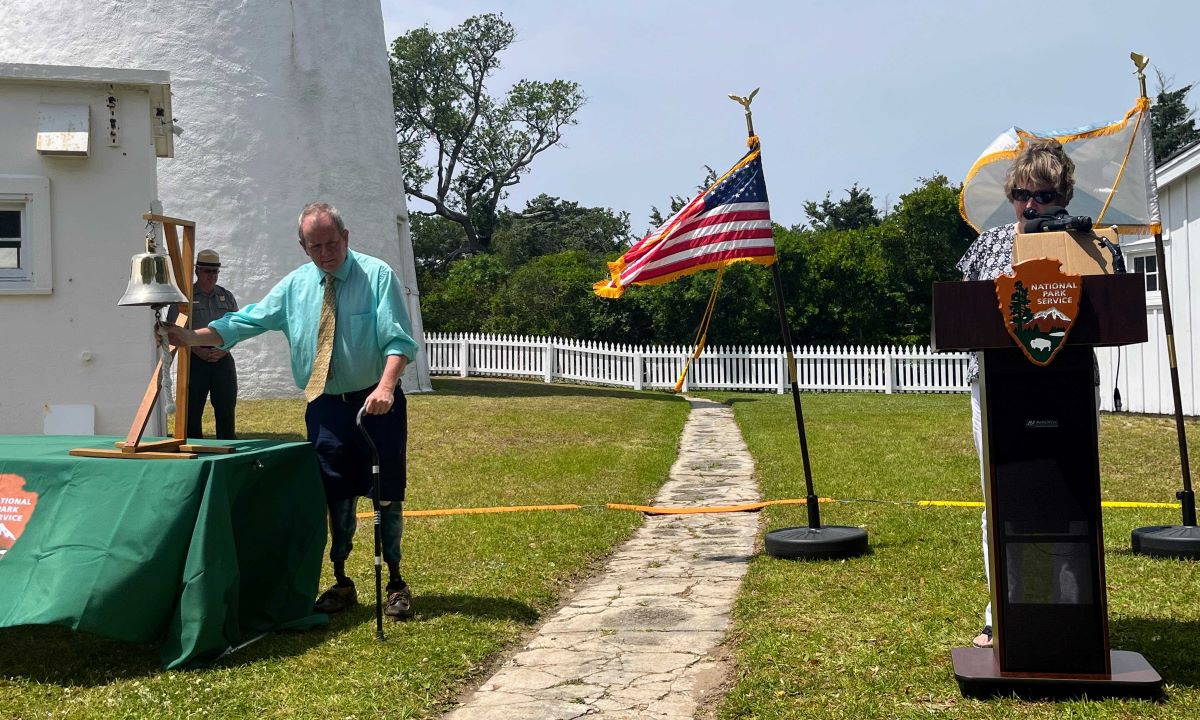
Lt. Cory Woods, supervisor of marine safety for the district that includes Ocracoke, recounted the U.S. Coast Guard’s long history and responsibilities in maintaining 400 lighthouses throughout the nation.
Randal Mathews, Ocracoke’s county commissioner, noted how the lighthouse has “weathered many storms, winds of changing times and witnessed the growth of this community in the shadows, which is that we can learn a valuable lesson afforded to resilience.”
Several times the Great Atlantic Storm of 1944, one of the most powerful hurricanes to ever strike the eastern United States, was mentioned because many islanders took refuge in the lighthouse during that event.
Scott Babinowich, chief of interpretation, education and visitor services, organized the event.
“I’m incredibly pleased with the turnout,” he said. “It’s humbling to see how many turned out, all the family connections.”
The base of the Ocracoke Lighthouse is open for viewing from 10:30 a.m. to 12:30 p.m. Monday to Friday.
The hour-long program can be viewed on the Facebook page of Outer Banks Forever, the nonprofit auxiliary organization for the Outer Banks National Seashore.
From 11-11:30 a.m. Monday to Thursday until May 25 on the lighthouse grounds, NPS rangers will talk about the details and history of the lighthouse and the keepers that kept the light burning.
Later this year, renovations will begin on the double keepers’ quarters, so-named because two families could live there duplex-style.
The rest of the complex will be renovated as well thanks to a $2 million federal appropriation.
The building will be refurbished back to as it was in 1823 as a visitor attraction and for park service staff housing.




